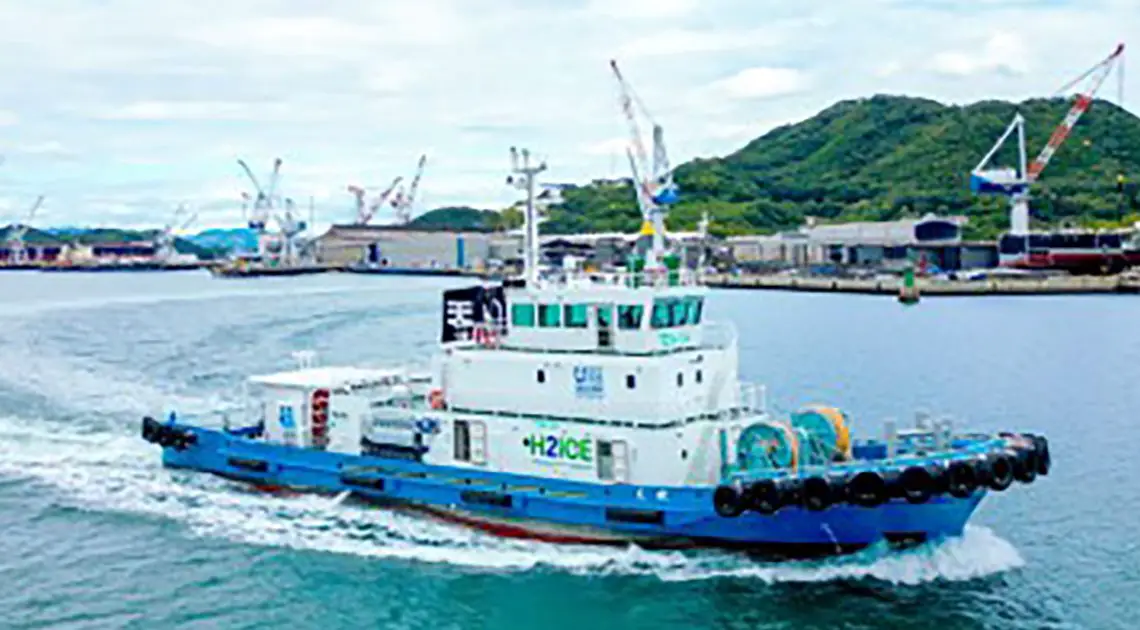
Hydrogen-Powered Tugboat Delivered TEN-OH Leads Japan’s Maritime Decarbonization
October 21, 2025If you drop by the Port of Yokohama at sunrise, it might look like any other busy morning—until a sleek tug glides out of drydock, its hull slicing through the water, leaving nothing but calm waves behind. Meet TEN-OH, Japan’s first hydrogen-powered tugboat. On October 15, 2025, TSUNEISHI SHIPBUILDING Co., Ltd. handed over this groundbreaking vessel, and ClassNK officially logged it in their registry. For anyone thinking about the future of port work, it’s a clear sign: maritime decarbonization isn’t some distant dream—it’s right here on the horizon.
With regulators tightening the screws—whether it’s IMO sulfur limits, looming carbon levies, or those ambitious net-zero deadlines—it’s all part of the push for maritime decarbonization. Ports everywhere are scrambling for cleaner options. TEN-OH gives us a taste of what a port with zero emission ships could look like, right in Japan’s own backyard.
A Landmark Delivery in Yokohama’s Harbor
That crisp autumn day, excitement buzzed among dockworkers, engineers, and everyone in between. OKUMURA Sachio, President of TSUNEISHI SHIPBUILDING, summed it up best: “TEN-OH marks a huge milestone in our journey toward sustainable maritime technology, and it underscores our century-long promise to keep pushing boundaries.” Backed by The Nippon Foundation through its Zero Emission Ships Project, the tug sailed through every test—hull checks, hydrogen leak inspections, you name it—before ClassNK gave it the green light. Now, it’s gearing up to start service in major hubs like Yokohama and Kobe, setting a template for carbon-neutral harbor operations around the globe. Sure, other countries have played around with hydrogen demos, but till now, no Japanese tug has ventured out powered by pure hydrogen.
Power Under the Hood: BEH₂YDRO High-Output Engines
At the heart of TEN-OH are its twin 12-cylinder BEH₂YDRO high-output hydrogen dual-fuel engines. Combined, they churn out 4,400 horsepower—right on par with traditional diesel tugs. Here’s the neat part: the high-pressure tanks from JPNH2YDRO stash about 250 kg of H₂, so when they fire up, it’s zero CO₂ down the stack. And if you ever need a backup, the system swaps over to marine diesel in a heartbeat, so you never miss a beat. An onboard control unit keeps tabs on hydrogen flow, engine temp, and fuel mix in real time, making sure everything runs smoothly. During sea trials, TEN-OH kept pace with its diesel cousins, proving that a hydrogen dual-fuel engine can handle the push-and-pull work that tugs demand.
Collaboration Driving Maritime Innovation
This wouldn’t have come together without a village. TSUNEISHI SHIPBUILDING nailed the naval architecture and hull design, while JPNH2YDRO—a joint venture between TSUNEISHI Group and CMB.TECH—took care of the high-pressure hydrogen storage and feed systems. Funding and industry alignment came courtesy of The Nippon Foundation’s Zero Emission Ships Project, which set the safety and industry benchmarks. ClassNK then stepped in to certify the hydrogen setup against international standards. From the welders fitting the tanks to the software wizards coding the control system, teams across Japan showed what public–private partnerships can pull off in the name of sustainable maritime technology.
Decarbonizing Ports, One Tug at a Time
Why does a hydrogen-powered tugboat matter? Ports are notorious emission hotspots—diesel engines spew out CO₂, NOₓ, and soot all day long. By running on pure hydrogen, TEN-OH slashes CO₂ to zero when in H₂ mode. That’s a breath of fresh air for waterfront cities, literally—less noise, fewer fumes, happier residents. As stricter emissions rules roll in from the IMO and local governments, having a proven hydrogen tug makes a strong case for the upgrade. And since TEN-OH can switch back to diesel if the hydrogen bunkering isn’t quite there yet, it bridges the gap between now and a fully zero emission ships future—without missing a deadline.
Charting the Course: Challenges and Opportunities
Of course, it’s not all smooth sailing. Green hydrogen made via electrolysis still costs more than diesel, and portside hydrogen bunkering stations are just getting off the ground. You’ve got to build safe storage facilities, train crews on handling H₂, and tweak emergency procedures—all of which take time and investment. But because TEN-OH’s hydrogen dual-fuel engine can flip between H₂ and diesel on the fly, a lot of operational risk evaporates. Plus, the real-world data from its voyages will help fine-tune maintenance schedules, optimize fuel use, and drive down costs over time. As more players jump in, the hydrogen supply chain will beef up, prices will come down, and before you know it, everyone will be on board.
Japan on the World Stage: A Hydrogen Hub in the Making
Japan’s shipyards have long punched above their weight, churning out top-notch vessels time and again. By rolling out TEN-OH, the country is sending a clear message: it’s ready to lead the pack in hydrogen propulsion and champion maritime decarbonization, not just traditional shipbuilding. Neighbors in South Korea and Singapore are keeping a close eye, and European and American yards are reworking their clean-energy plans. With solid R&D, government incentives for low-carbon shipping, and heavy hitters like TSUNEISHI steering the charge, Japanese firms are poised to export both their know-how and these next-gen vessels to ports from Rotterdam to Los Angeles.
The Road Ahead: Charting a Zero-Emission Future
But TEN-OH is more than a one-off—it’s proof that hydrogen can tackle one of the toughest marine roles out there. For TSUNEISHI, it’s the first step toward a fleet of alternative fuel ships—from methanol carriers to LNG ferries, and down the line, full-scale hydrogen container ships. For ports, it’s a live testbed for hydrogen bunkering, crew training, and emission-tracking systems. And for the planet, it’s a giant leap toward cutting the nearly 3% of global CO₂ that comes from shipping. As partnerships like TSUNEISHI, The Nippon Foundation, JPNH2YDRO, and ClassNK drive this maritime decarbonization movement, the horizon for sustainable maritime technology looks brighter than ever. And honestly? That’s news we can all get behind.



 With over 15 years of reporting hydrogen news, we are your premier source for the latest updates and insights in hydrogen and renewable energy.
With over 15 years of reporting hydrogen news, we are your premier source for the latest updates and insights in hydrogen and renewable energy.